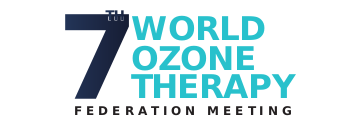
Ozone therapy in brazil: achievements and challenges for the future.
Abstract
The practice of Ozone Therapy in Brazil began in 1975, with Doctor Heinz Konrad. In the 90’s, other professionals started to practice it in a precursory and unregulated way, with imported equipment. The work of physician Edison de Cezar Philippi stands out, who was a great disseminator and together with other physicians such as Dr. Glacus Brito, Dr. Maria Emília Serra, Dr. Ana Cristina Barreira, among others, founded the first association of Ozone Therapy in Brazil, which in 2006 became Brazilian Association of Ozone Therapy (ABOZ), with Dr. Maria Emília Gadelha Serra as its first president. In the state and regulatory scope, Ozone Therapy was an unknown technique. Numerous scientific articles were presented to the Ministry of Health, the Federal Council of
Medicine, and ANVISA (equipment regulatory agency in Brazil). The first regulatory framework for Ozone Therapy in Brazil took place in 2015, with the publication of Resolution CFO 166/2015, which regulated Ozone Therapy in Dentistry.
In 2018, Ozone Therapy was included as an integrative practice by the Ministry of Health of Brazil, with the publication of ORDINANCE N° 702 (21/03/2018) which included new practices in the National Policy on Integrative and Complementary Practices (PNPIC), of the Brazilian Unified Health System (SUS). From this milestone, the Professional Class Councils began to understand and regulate Ozone Therapy within the scope of each profession.
Currently, dentistry, physiotherapy, pharmacy, nursing, veterinary medicine, and biomedicine councils have an official understanding of Ozone Therapy, each within its scope of action and with a specific definition of training. These resolutions collaborate to improve the scenario of Ozone Therapy in the country, bringing more possibilities for treatment, and health care for the entire population.
Although there are numerous qualified studies for the practice to be regulated for medicine, the Federal Council of Medicine is still waiting for more scientific evidence, so it only authorizes activities in the experimental scope (registered clinical research).
In the meantime, faced with the difficulties of understanding from the Federal Council of Medicine, the national congress approved a bill proposing that ozone therapy be authorized throughout the national territory. This bill is currently under review by the Senate and the next step is presidential sanction.
Even with all the regulatory achievements in these 15 years of work, we still have many challenges to overcome. The main one is the regulation for use by doctors, so Ozone Therapy becomes an official technique. In addition, for Ozone Therapy to be carried out more ethically and scientifically, it is necessary to understand the scenario and some challenges:
• How to establish boundaries between professional categories, since ozone has many application routes - not all professionals are prepared to perform more invasive routes.
• The established model based on the diagnosis and treatment of the disease.
• Banalization of the technique by unqualified professionals, leading to a false understanding and discrediting of the technique.
• Difficulty in regulating equipment and minimum quality standards, while on the internet equipment from China enters without qualification.
• Standardization and minimum criteria for the manufacture of Ozonized Oils, based on studies and not on empiricism.
Medicine, and ANVISA (equipment regulatory agency in Brazil). The first regulatory framework for Ozone Therapy in Brazil took place in 2015, with the publication of Resolution CFO 166/2015, which regulated Ozone Therapy in Dentistry.
In 2018, Ozone Therapy was included as an integrative practice by the Ministry of Health of Brazil, with the publication of ORDINANCE N° 702 (21/03/2018) which included new practices in the National Policy on Integrative and Complementary Practices (PNPIC), of the Brazilian Unified Health System (SUS). From this milestone, the Professional Class Councils began to understand and regulate Ozone Therapy within the scope of each profession.
Currently, dentistry, physiotherapy, pharmacy, nursing, veterinary medicine, and biomedicine councils have an official understanding of Ozone Therapy, each within its scope of action and with a specific definition of training. These resolutions collaborate to improve the scenario of Ozone Therapy in the country, bringing more possibilities for treatment, and health care for the entire population.
Although there are numerous qualified studies for the practice to be regulated for medicine, the Federal Council of Medicine is still waiting for more scientific evidence, so it only authorizes activities in the experimental scope (registered clinical research).
In the meantime, faced with the difficulties of understanding from the Federal Council of Medicine, the national congress approved a bill proposing that ozone therapy be authorized throughout the national territory. This bill is currently under review by the Senate and the next step is presidential sanction.
Even with all the regulatory achievements in these 15 years of work, we still have many challenges to overcome. The main one is the regulation for use by doctors, so Ozone Therapy becomes an official technique. In addition, for Ozone Therapy to be carried out more ethically and scientifically, it is necessary to understand the scenario and some challenges:
• How to establish boundaries between professional categories, since ozone has many application routes - not all professionals are prepared to perform more invasive routes.
• The established model based on the diagnosis and treatment of the disease.
• Banalization of the technique by unqualified professionals, leading to a false understanding and discrediting of the technique.
• Difficulty in regulating equipment and minimum quality standards, while on the internet equipment from China enters without qualification.
• Standardization and minimum criteria for the manufacture of Ozonized Oils, based on studies and not on empiricism.
Full Text:
PDFRefbacks
- There are currently no refbacks.
![]() Journal of Ozone Therapy (JO3T)
Journal of Ozone Therapy (JO3T)
The Official Peer Reviewed Journal of the World Federation of Ozone Therapy (WFOT)
ISSN 2444-9865
